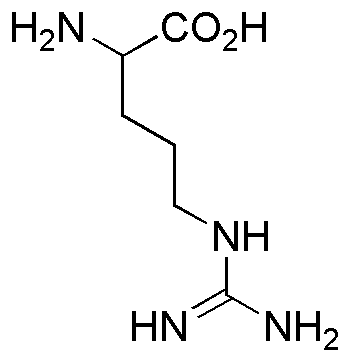DL-Arginine is widely utilized in research focused on:
- Cardiovascular Health: It serves as a precursor to nitric oxide, which helps improve blood flow and reduce blood pressure, making it valuable in cardiovascular studies and treatments.
- Sports Nutrition: Athletes use it to enhance performance and recovery by increasing nitric oxide levels, which can improve endurance and reduce muscle soreness.
- Wound Healing: Research indicates that DL-Arginine can promote collagen synthesis and improve wound healing, making it beneficial in medical and cosmetic applications.
- Immune Function: It plays a role in enhancing immune response, which is crucial for developing therapies in immunology and infectious diseases.
- Hormonal Regulation: The compound is involved in the secretion of growth hormone, making it relevant in studies related to growth disorders and metabolic health.
General Information
Properties
Safety and Regulations
Applications
DL-Arginine is widely utilized in research focused on:
- Cardiovascular Health: It serves as a precursor to nitric oxide, which helps improve blood flow and reduce blood pressure, making it valuable in cardiovascular studies and treatments.
- Sports Nutrition: Athletes use it to enhance performance and recovery by increasing nitric oxide levels, which can improve endurance and reduce muscle soreness.
- Wound Healing: Research indicates that DL-Arginine can promote collagen synthesis and improve wound healing, making it beneficial in medical and cosmetic applications.
- Immune Function: It plays a role in enhancing immune response, which is crucial for developing therapies in immunology and infectious diseases.
- Hormonal Regulation: The compound is involved in the secretion of growth hormone, making it relevant in studies related to growth disorders and metabolic health.
Documents
Safety Data Sheets (SDS)
The SDS provides comprehensive safety information on handling, storage, and disposal of the product.
Product Specification (PS)
The PS provides a comprehensive breakdown of the product’s properties, including chemical composition, physical state, purity, and storage requirements. It also details acceptable quality ranges and the product's intended applications.
Certificates of Analysis (COA)
Search for Certificates of Analysis (COA) by entering the products Lot Number. Lot and Batch Numbers can be found on a product’s label following the words ‘Lot’ or ‘Batch’.
*Catalog Number
*Lot Number
Certificates Of Origin (COO)
This COO confirms the country where the product was manufactured, and also details the materials and components used in it and whether it is derived from natural, synthetic, or other specific sources. This certificate may be required for customs, trade, and regulatory compliance.
*Catalog Number
*Lot Number
Safety Data Sheets (SDS)
The SDS provides comprehensive safety information on handling, storage, and disposal of the product.
DownloadProduct Specification (PS)
The PS provides a comprehensive breakdown of the product’s properties, including chemical composition, physical state, purity, and storage requirements. It also details acceptable quality ranges and the product's intended applications.
DownloadCertificates of Analysis (COA)
Search for Certificates of Analysis (COA) by entering the products Lot Number. Lot and Batch Numbers can be found on a product’s label following the words ‘Lot’ or ‘Batch’.
*Catalog Number
*Lot Number
Certificates Of Origin (COO)
This COO confirms the country where the product was manufactured, and also details the materials and components used in it and whether it is derived from natural, synthetic, or other specific sources. This certificate may be required for customs, trade, and regulatory compliance.


